GRAVEL CULTURE: Behind the Lens
Posted By Gravel Union
On 17 April 2020
Before he joined the Gravel Union team, Olly worked as an adventure filmmaker specialising in work for the cycling industry. Here he gives an insight into how a gravel-based film shoot is planned and executed, all set in the stunning scenery of southern Tuscany back in April 2019.
If you were ever fortunate enough to be able to visit a Hollywood movie set during filming you would be staggered by the size of the crew involved in the production. Hundreds and hundreds of highly skilled individuals come together in a tightly planned and organised manner. Every minute of finished film that you see on the silver screen will be the produce of tens (or even hundreds) of hours of preparation, shooting, editing and colour grading. Budgets can run to multiple millions of £/$/€ and the line between major success and bankruptcy can be a fine one.
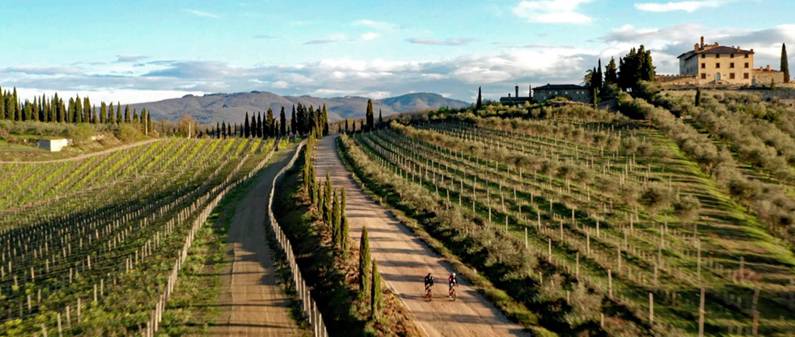
Archetypal Tuscany
It would be fair to say that if you were to arrive on the location of a gravel riding shoot, you might be somewhat underwhelmed in comparison. While some shoots do have bigger budgets, large teams and a well-planned and mapped out schedule, more commonly projects are shot with a skeleton crew, with relatively tiny budgets and the turnaround from finishing the filming to on-line publishing can be a matter of days (or even hours for some smaller productions). While most aspirant filmmakers dream of one day making it into the Hollywood big-league, there’s something really special about being involved in a tiny production, yet still managing to produce a film with a well-crafted aesthetic and high level production values.
Small is beautiful as the saying goes and when done properly this can apply to a film shoot. To pull it off requires good planning, plenty of thinking on your feet, some luck with good weather/light and carefully selected kit – not that different to organising a gravel ride really! A small shoot also needs the right client (with well managed expectations of what they will receive for their budget), a suitable location and, not forgetting, the right ‘talent’ to be the star(s) of the film.
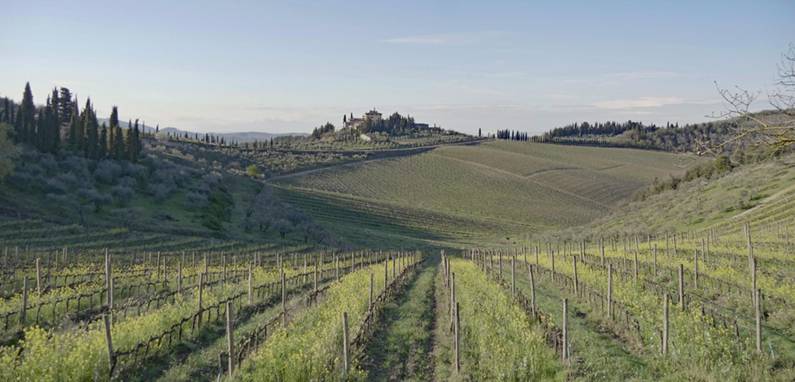
Not a bad view from the office
All shoots start off with an idea – it might be fully formed in the head of the client or the filmmaker with copious shooting notes and a well-crafted storyboard, or it could be just a nugget of an idea which needs fleshing out on-site. I’ve tended to work on shoots which are based on a loose idea – a view, a feeling, even a sound and the film design is created on-the-fly in a documentary style, rather than being tightly scripted in advance.
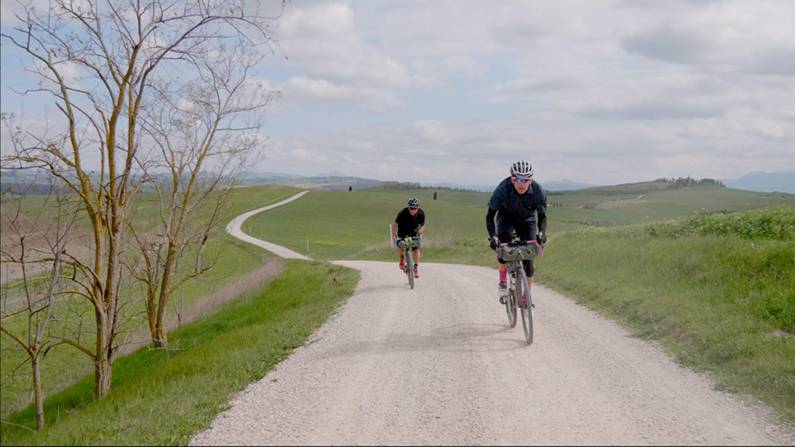
Motor pacing behind the hire car
For the Tuscany gravel shoot, the client (Nick Miles from RPM90) had some great locations, useful local contacts and a rough idea of how he wanted the finished film to look, but the detail was decided based on what we saw, heard and found en-route. The premise of the film was to capture what’s great about bikepacking, using the stunning gravel roads of southern Tuscany as our backdrop. The film’s stars were Nick and Jo Burt – luckily both experienced photo/film shoot stars and well versed in the requirement to “just do it one more time, please”.
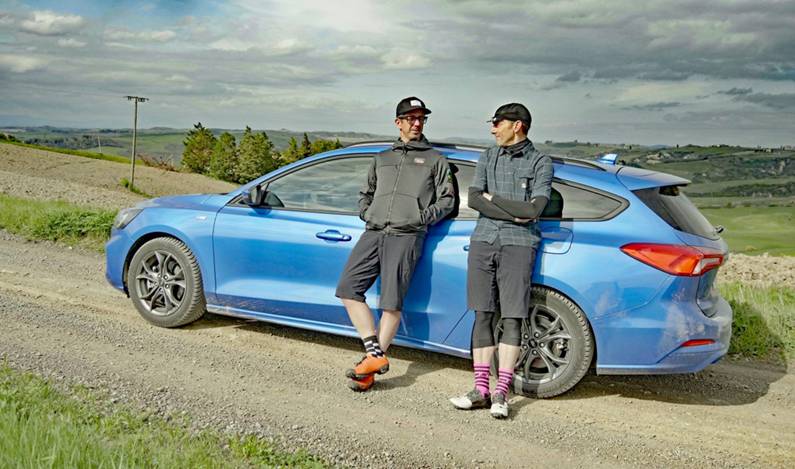
Waiting for the camera faff to be finished
For this shoot I was filming with the land-based cameras, flying a drone and shooting the audio. Being a one man band gave me complete control of what I shot, how and when, but also meant I ran around like I was on fire for the whole of shoot – rigging/de-rigging kit, thinking about locations, trying to record clean audio and mentally creating an edit in my head. I also had the joy of driving the hire car, which caused a few creative issues for the filming – how could I safely film the riders from the back of the car whilst also driving? Luckily a bit of high tech kit in the form of a DJI Ronin-S gimbal and some low tech kit in the form of some webbing ratchet straps soon solved that issue. With the gimbal removing any shake or unwanted motion and some clever electronics in the camera keeping the focus sharp and accurate, I got the shots I needed, safely and rapidly.
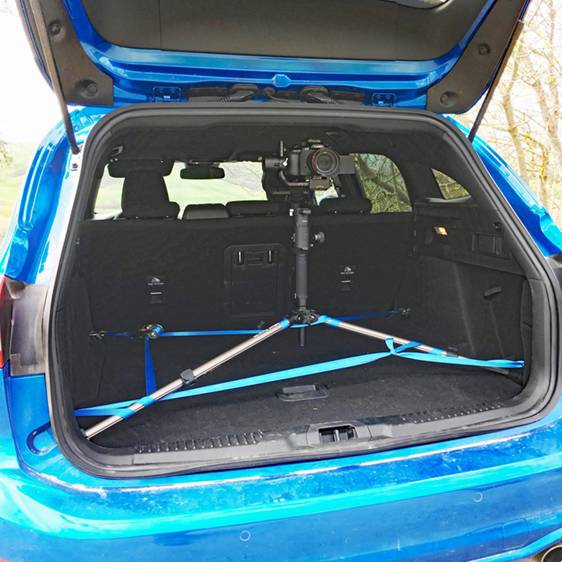
High tech and low tech
One of the hardest jobs on a small shoot is to record decent quality audio. In a world of social media where people might be watching the film on their phone while at work (with the audio turned down/muted), you might wonder why I bother spending time and effort shooting decent audio. My ethos has been that even if only a tiny percentage of the viewers listen to the soundtrack as well as watching the visuals, then putting in the effort has been worthwhile. I recorded background audio wherever I could on the shoot, but then also overlaid audio from my existing library to boost it – luckily the sound of riders on a gravel road for example is pretty similar whether it was shot in Tuscany or Turkmenistan, so I was able to add in additional ’stock’ audio to boost the depth of sound on the finished film. Nick later recorded the voiceover using the low-tech solution of recording it as an voice memo on his smartphone while putting a duvet over his head to deaden any unwanted background noise/echo.
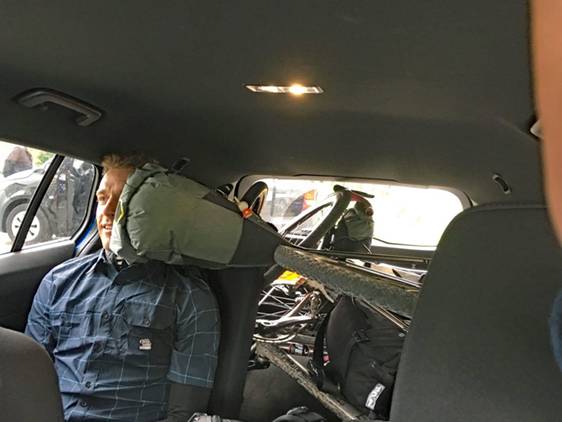
Next time we’ll get a bigger hire car
Over the course of three days we covered more than 1000kms, road/rode some of the finest gravel roads in Italy and most importantly came home with some really great footage for the films. The final film is never going to make it the Cannes Festival and won’t be watched by millions of people world-wide, but as a way of showing visually how stunning Tuscany is (and why you should consider going on a bikepacking trip there) it’s done the job. From a purely self-centred perspective I got to work somewhere I love, eat fantastic food, drink a lot of perfectly poured espresso and have a really fun time – considering that was ‘work’ I consider myself to be extremely fortunate.
The finished film can be viewed here: